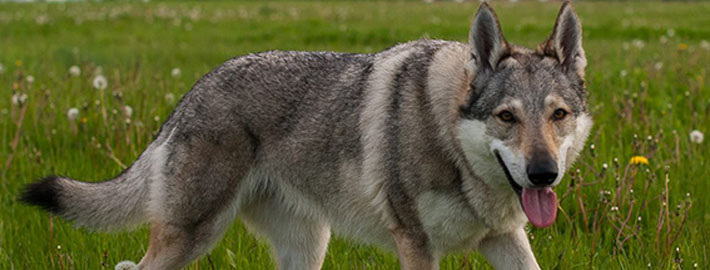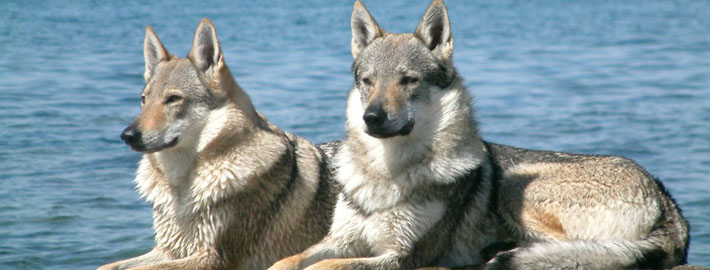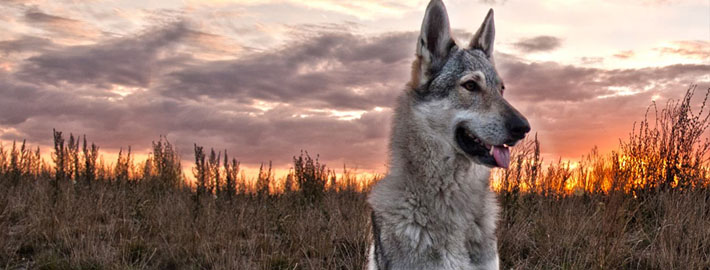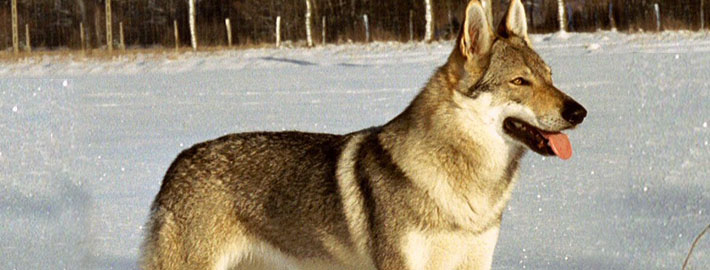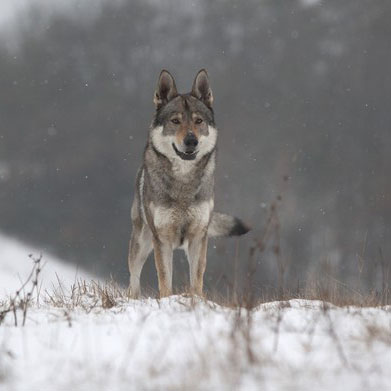What makes the Czechoslovakian Vlcak Unique?
Created as part of a scientific experiment, these hardy, weather-resistant dogs were first used by Special Forces branches of the Czechoslovakian army. Members of this breed have since branched out to other occupations that include hunting, herding, and tracking. Although they require additional training and competent handlers, these canines have also proven their worth as search and rescue dogs.
Breed Groups
Page Contents
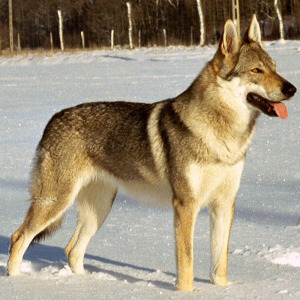
Is the Czechoslovakian Vlcak Right For You?
Owners should be aware that Czechoslovakian Vlcaks do not typically bark, but they do howl and make other noises when they are trying to communicate. These brave dogs are incredibly devoted to their owners and their families. Czechoslovakian Vlcaks are also relatively playful and they get along well with children. These dogs tend to be wary of strangers and are not an overly friendly or outgoing breed, but they will not attack humans unless they are given a reason to do so.
In 5 Words
- Lively
- Quick
- Courageous
- Fearless
- Active
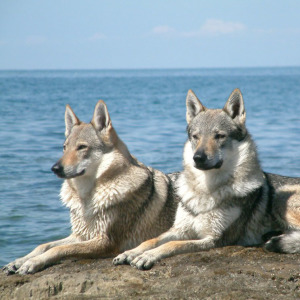
Characteristics
Learn About the Czechoslovakian Vlcak
Description
General Description
Czechoslovakian Vlcaks greatly resemble their wild ancestors. Members of this breed have agile bodies, lengthy legs, white masks, erect ears, and amber eyes just like wolves do. These dogs typically have an alert expression and teeth that meet in a scissors bite. Czechoslovakian Vlcaks also have proportionate, rectangular bodies. They possess muscular skulls, thick jaws, arched backs, and wide chests. Each member of this breed should also possess a high-set tail. According to the United Kennel Club standards, these dogs should move with a “harmonious, light footed and ground covering” gait and their feet should be kept close to the ground while they are in motion.
Size
According the breed standards set by the United Kennel Club, male dogs of this breed must weigh at least 57 pounds (26 kilograms) and females should weigh about 44 pounds (20 kilograms). Male dogs are slightly taller than their female counterparts by being around 25.5 inches (65 centimeters) in height rather than the 23.5 inches (60 centimeters) that is standard for females of this breed.
Coat
Members of this breed have thick double coat that is coarse in texture and that hangs straight down their backs. This feature protects these dogs from adverse weather conditions and members of this breed do well in cooler climates. Czechoslovakian Vlcaks are typically yellow-gray or silver-grey in hue. No other colorations are considered to be acceptable in members of this breed and failure to conform to this standard will result in an individual being disqualified from the show ring. The dogs will often have lighter fur on their undersides and chest areas. They also have masks over their faces. The lack of a noticeable mask is also considered to be a fault in the show ring.
Short History of the Czechoslovakian Vlcaks
Unlike many breeds that can trace their lineages back for centuries, this breed of dog is relatively modern. These canines were brought into being in 1955 when Czechoslovakian scientists decided to develop a new type of canine, one that possessed the endurance of a wolf but also had the friendly disposition of a dog. About fifty German Shepherds and four Carpathian wolves played a role in this project. By 1965, the experiment had ended and a new breeding program had begun.
During the 1970s, a large number of these dogs were transferred to a station in Bratislava and progressed to other locations from there. The first 43 dogs received their pedigree in 1982 and the breed was designated as a national dog type for Czechoslovakia that same year. Approximately 1552 dogs were registered in the decade that followed but the breed achieved official Fédération Cynologique Internationale status in 1989. The United Kennel Club recognized the breed much later in 1996. The Czechoslovakian Vlcak Club of America established in 2011.
Members of this breed are known as Czechoslovakian Wolfdogs in all other languages except English where they go by the appellation of Czechoslovakian Vlcaks. These dogs are most commonly found in Italy but the breed still not prevalent anywhere.
Temperament
Owners should be aware that Czechoslovakian Vlcaks do not typically bark, but they do howl and make other noises when they are trying to communicate. These brave dogs are incredibly devoted to their owners and their families. Czechoslovakian Vlcaks are also relatively playful and they get along well with children. These dogs tend to be wary of strangers and are not an overly friendly or outgoing breed, but they will not attack humans unless they are given a reason to do so.
Reports on their ability to get along with other animals vary. Some sources state that members of this breed should be carefully watched around all other family pets to prevent any problematic encounters from taking places. Other sources state that Czechoslovakian Vlcaks will quickly bond with other animals thats belong to their family. Most reports agree that dog aggression can sometimes be a problem for members of this breed, especially those that are not properly supervised. It is also true that if these dogs encounter an unfamiliar animal, a fight is likely to result.
Caring for Your Czechoslovakian Vlcak
General Health
Members of this breed do not have many health problems and most live more than 12 years. However, owners should note that hip dysplasia is a major breed concern. Other ailments to look out for in this breed include epilepsy, exocrine pancreatic insufficiency, degenerative myelopathy, and several types of cancer such as leukemia. Eye problems are another concern as cataracts, lens luxation, and progressive retinal atrophy have been known to appear from time to time.
Care
Daily
All dogs need daily exercise and a long, briskly paced walk is highly recommended for members of this breed.
Weekly
It is a good idea to regularly brush a dog’s teeth in order to prevent both foul breath and tooth decay.
Monthly
All pets require flea, heartworm, and tick prevention medications to keep them healthy. These products are usually administered on a monthly basis.
Grooming & Bathing
Owners should note that these dogs go through a period of heavy shedding about two times a year. Czechoslovakian Vlcaks have coats that are thicker during the winters than they are in the summertime and, as a result, they will need to be regularly groomed during the colder months of the year. However, the breed has dirt repelling and naturally odorless fur, so they do not have to be washed often.
Exercise & Training
Although Czechoslovakian Vlcaks are an intelligent breed, they need motivation to learn and they quickly become bored with repetitive exercises. These dogs can be trained, but doing so will take more effort than is usually needed because these dogs’ main focus is not on pleasing their human owners. The presence of an authoritative owner is likewise an essential element in keeping these dogs from becoming temperamental.

